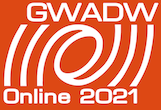Speaker
Description
LIGO and Virgo have detected more than 70 signals from black hole and/or neutron star mergers. All measured signals come in-band at around 30 Hz as suspension control noise, fueled by many cross couplings between angular and translational degrees of freedom, is dominant below 30 Hz. It is impossible to know, but exciting to imagine what signals are lurking there once we can access this regime.
Einstein Telescope (ET) will be an underground and cryogenic detector sensitive to GWs down to 2 Hz. New sensor development is underway for ET. We believe the cryogenic environment can be used in combination with superconducting materials to open up pathways to low-loss actuators and sensor mechanics.
The Cryogenic Superconducting Inertial Sensor (CSIS) revolutionizes the (cryogenic) inertial sensor field by obtaining a displacement sensitivity at 0.5 Hz of 3 orders of magnitude better than state-of-art. Not only will it help ET detect GWs from 2 Hz onwards, CSIS will also be deployed on the Moon. The recently published Lunar GW Antenna (LGWA) concept uses an inertial sensor to probe surface motion as a result of the GW excitation of the Moon's normal body modes (fundamental just below 1 mHz and many other modes and their harmonics at higher frequencies). In summary, CSIS will be the world's most sensitive low-frequency inertial sensor and, when deployed in ET and on the Moon, will enable GW science from 1 mHz to 10 Hz.

